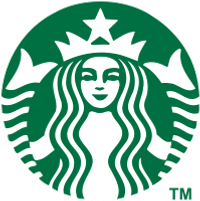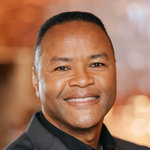
Starbucks Corp
NASDAQ:SBUX


| US |

|
Johnson & Johnson
NYSE:JNJ
|
Pharmaceuticals
|
| US |

|
Berkshire Hathaway Inc
NYSE:BRK.A
|
Financial Services
|
| US |

|
Bank of America Corp
NYSE:BAC
|
Banking
|
| US |

|
Mastercard Inc
NYSE:MA
|
Technology
|
| US |

|
UnitedHealth Group Inc
NYSE:UNH
|
Health Care
|
| US |

|
Exxon Mobil Corp
NYSE:XOM
|
Energy
|
| US |

|
Pfizer Inc
NYSE:PFE
|
Pharmaceuticals
|
| US |

|
Palantir Technologies Inc
NYSE:PLTR
|
Technology
|
| US |

|
Nike Inc
NYSE:NKE
|
Textiles, Apparel & Luxury Goods
|
| US |

|
Visa Inc
NYSE:V
|
Technology
|
| CN |

|
Alibaba Group Holding Ltd
NYSE:BABA
|
Retail
|
| US |

|
JPMorgan Chase & Co
NYSE:JPM
|
Banking
|
| US |

|
Coca-Cola Co
NYSE:KO
|
Beverages
|
| US |

|
Walmart Inc
NYSE:WMT
|
Retail
|
| US |

|
Verizon Communications Inc
NYSE:VZ
|
Telecommunication
|
| US |

|
Chevron Corp
NYSE:CVX
|
Energy
|
Utilize notes to systematically review your investment decisions. By reflecting on past outcomes, you can discern effective strategies and identify those that underperformed. This continuous feedback loop enables you to adapt and refine your approach, optimizing for future success.
Each note serves as a learning point, offering insights into your decision-making processes. Over time, you'll accumulate a personalized database of knowledge, enhancing your ability to make informed decisions quickly and effectively.
With a comprehensive record of your investment history at your fingertips, you can compare current opportunities against past experiences. This not only bolsters your confidence but also ensures that each decision is grounded in a well-documented rationale.
Do you really want to delete this note?
This action cannot be undone.

| 52 Week Range |
78.46
115.81
|
| Price Target |
|
We'll email you a reminder when the closing price reaches USD.
Choose the stock you wish to monitor with a price alert.

|
Johnson & Johnson
NYSE:JNJ
|
US |

|
Berkshire Hathaway Inc
NYSE:BRK.A
|
US |

|
Bank of America Corp
NYSE:BAC
|
US |

|
Mastercard Inc
NYSE:MA
|
US |

|
UnitedHealth Group Inc
NYSE:UNH
|
US |

|
Exxon Mobil Corp
NYSE:XOM
|
US |

|
Pfizer Inc
NYSE:PFE
|
US |

|
Palantir Technologies Inc
NYSE:PLTR
|
US |

|
Nike Inc
NYSE:NKE
|
US |

|
Visa Inc
NYSE:V
|
US |

|
Alibaba Group Holding Ltd
NYSE:BABA
|
CN |

|
JPMorgan Chase & Co
NYSE:JPM
|
US |

|
Coca-Cola Co
NYSE:KO
|
US |

|
Walmart Inc
NYSE:WMT
|
US |

|
Verizon Communications Inc
NYSE:VZ
|
US |

|
Chevron Corp
NYSE:CVX
|
US |
This alert will be permanently deleted.
Starbucks Corp





In the bustling heart of Seattle in 1971, Starbucks Corp. brewed its first cup, initially focusing on selling high-quality coffee beans and equipment. The seeds of its transformation were sown with the entry of Howard Schultz in 1982, who saw the potential to recreate the coffee culture he experienced in Italy. Under Schultz’s visionary leadership, the company shifted its business model to become a haven for social interaction, transforming the typical American café experience. Starbucks established itself as a purveyor of premium coffee beverages, continuously refining its menu to include an array of offerings such as espresso-based drinks, teas, and recently, innovative cold brews that attract a diverse clientele. As the company's footprint expanded globally, it maintained a consistent brand aura—offering not just coffee but a community experience, a 'third place' between home and work.
Starbucks meticulously crafts its revenue model through a combination of in-store sales, a robust loyalty program, and strategic partnerships, ensuring profitability. The core engine driving its revenues is its chain of company-operated stores, which generate the lion's share of income by engaging customers with both the ambiance of its cafés and the quality of its products. Complementing in-store sales are licensed stores, merchandise sales, and the ever-popular Starbucks Card, which encourages frequent visits and cultivates customer loyalty. The company also leverages strategic alliances, such as with Nestlé, allowing for broader distribution of Starbucks-branded products in grocery aisles worldwide. By balancing its traditional café culture with a shrewd approach to market expansion and product diversification, Starbucks ensures its place as a dominant force in the global coffee industry.

In the bustling heart of Seattle in 1971, Starbucks Corp. brewed its first cup, initially focusing on selling high-quality coffee beans and equipment. The seeds of its transformation were sown with the entry of Howard Schultz in 1982, who saw the potential to recreate the coffee culture he experienced in Italy. Under Schultz’s visionary leadership, the company shifted its business model to become a haven for social interaction, transforming the typical American café experience. Starbucks established itself as a purveyor of premium coffee beverages, continuously refining its menu to include an array of offerings such as espresso-based drinks, teas, and recently, innovative cold brews that attract a diverse clientele. As the company's footprint expanded globally, it maintained a consistent brand aura—offering not just coffee but a community experience, a 'third place' between home and work.
Starbucks meticulously crafts its revenue model through a combination of in-store sales, a robust loyalty program, and strategic partnerships, ensuring profitability. The core engine driving its revenues is its chain of company-operated stores, which generate the lion's share of income by engaging customers with both the ambiance of its cafés and the quality of its products. Complementing in-store sales are licensed stores, merchandise sales, and the ever-popular Starbucks Card, which encourages frequent visits and cultivates customer loyalty. The company also leverages strategic alliances, such as with Nestlé, allowing for broader distribution of Starbucks-branded products in grocery aisles worldwide. By balancing its traditional café culture with a shrewd approach to market expansion and product diversification, Starbucks ensures its place as a dominant force in the global coffee industry.
Revenue Growth: Starbucks reported Q4 revenue of $9.6 billion, up 5% year-over-year, driven by international performance and modest global comparable store sales growth.
Return to Comp Growth: Global comparable store sales grew 1% in Q4, marking the first positive quarter in 7 quarters, with North America comps flat and international comps up 3%.
EPS Decline: Earnings per share for Q4 were $0.52, down 34% from last year, reflecting the impact of inflation and strategic investments.
Operating Margin Pressure: Q4 operating margin was 9.4%, down 500 basis points, mainly due to inflation and increased labor costs from the Back to Starbucks initiatives.
Positive U.S. Trends: U.S. company-operated comp sales turned positive in September and remained positive through October, powered by transaction growth and new service standards.
China & International: International revenue reached a record $2.1 billion in Q4 and $7.8 billion for the year, with China posting 2% comp sales growth and surpassing 8,000 stores.
Strategic Store Closures: 107 net store closures globally in Q4 as part of a portfolio optimization, expected to be slightly accretive to margins.
Disciplined Outlook: Management expects continued top-line growth in 2026 but notes that turnarounds aren’t always linear; more detailed guidance will be provided at January's Investor Day.
Management

Bradley E. Lerman has been a prominent figure in the legal and corporate governance sphere. Before his tenure at Starbucks, he held significant roles at major corporations, showcasing a strong background in legal affairs, compliance, and corporate strategy. At Starbucks, Lerman served as the General Counsel, where he was responsible for overseeing the company's global legal operations, including matters related to compliance, labor relations, litigation, and regulatory affairs. His experience includes leadership positions that highlight his expertise in navigating complex legal landscapes, supporting business objectives, and ensuring adherence to international laws and regulations. Prior to his role at Starbucks, Lerman has held executive positions in other multinational companies, contributing to their legal and business strategies.


Michael A. Conway is a prominent figure in the coffee industry, currently serving as an executive leader at Starbucks Corporation. As of his latest roles, he has held the position of Group President of International and Channel Development at Starbucks. In this capacity, Conway is responsible for overseeing Starbucks’ operations and growth strategies in international markets outside of the United States, as well as leading the channel development segment, which includes various business channels such as retail products and ready-to-drink beverages available in grocery and convenience stores globally. Conway brings a wealth of experience in brand expansion and operational management to Starbucks. His strategic acumen has been pivotal in driving international market penetration and establishing partnerships that further the company's global footprint. Under his leadership, Starbucks has been able to expand its presence into new markets and enhance its offerings through innovative retail channels. Before joining Starbucks, Michael Conway held leadership roles at other major companies, which contributed to his expertise in navigating complex market dynamics and developing effective growth strategies. His leadership style is characterized by a strong focus on team development, customer engagement, and sustainable business practices, aligning with Starbucks' corporate values. Conway's contributions to Starbucks are notable for enhancing the brand's penetration in competitive international landscapes, fostering cross-cultural business relationships, and driving sustainable growth initiatives, thus playing a crucial role in Starbucks' continued worldwide expansion and success.

Conway brings a wealth of experience in brand expansion and operational management to Starbucks. His strategic acumen has been pivotal in driving international market penetration and establishing partnerships that further the company's global footprint. Under his leadership, Starbucks has been able to expand its presence into new markets and enhance its offerings through innovative retail channels.
Before joining Starbucks, Michael Conway held leadership roles at other major companies, which contributed to his expertise in navigating complex market dynamics and developing effective growth strategies. His leadership style is characterized by a strong focus on team development, customer engagement, and sustainable business practices, aligning with Starbucks' corporate values.
Conway's contributions to Starbucks are notable for enhancing the brand's penetration in competitive international landscapes, fostering cross-cultural business relationships, and driving sustainable growth initiatives, thus playing a crucial role in Starbucks' continued worldwide expansion and success.

Sara Kelly is the Executive Vice President and Chief Partner Officer at Starbucks Corporation. In her role, she oversees the company's global partner resources (human resources) operations, championing initiatives related to talent management, organizational development, and employee engagement. Since joining Starbucks, Kelly has been instrumental in shaping the company's culture and fostering an inclusive environment that prioritizes partner experience and development. Her leadership focuses on supporting Starbucks’ mission and values, ensuring a diverse and equitable workplace, and enhancing the growth and success of the company's global workforce.



Bao Giang Val Bauduin is an accomplished executive currently serving as the Senior Vice President and Chief Accounting Officer at Starbucks Corporation. In this key role, he is responsible for overseeing the company's accounting functions, ensuring financial integrity, and contributing to strategic financial planning. Before joining Starbucks, Bauduin accumulated significant experience in the financial sector. He held a leadership role at William Sonoma, where he was responsible for various financial operations. His expertise spans financial reporting, internal controls, and process improvements, skills he has utilized to drive efficiency and accuracy in accounting practices. Bauduin's educational background includes a strong emphasis on finance and accounting, with relevant degrees that have positioned him well for his roles in financial leadership. His career is marked by a commitment to excellence, operational improvement, and strategic financial management. His contributions to Starbucks are part of the company's broader efforts to maintain financial transparency and uphold its reputation as a leader in the global coffee industry. Under his financial stewardship, Starbucks continues to emphasize growth, innovation, and sustainable financial practices.

Before joining Starbucks, Bauduin accumulated significant experience in the financial sector. He held a leadership role at William Sonoma, where he was responsible for various financial operations. His expertise spans financial reporting, internal controls, and process improvements, skills he has utilized to drive efficiency and accuracy in accounting practices.
Bauduin's educational background includes a strong emphasis on finance and accounting, with relevant degrees that have positioned him well for his roles in financial leadership. His career is marked by a commitment to excellence, operational improvement, and strategic financial management.
His contributions to Starbucks are part of the company's broader efforts to maintain financial transparency and uphold its reputation as a leader in the global coffee industry. Under his financial stewardship, Starbucks continues to emphasize growth, innovation, and sustainable financial practices.

Deborah L. Hall Lefevre is a distinguished executive known for her role at Starbucks Corporation. Serving as the Chief Technology Officer, she is responsible for leading the company's technology strategy and overseeing initiatives that enhance the digital customer experience. Her leadership focuses on leveraging technology to drive innovation and improve operational efficiency across Starbucks' global operations. Before joining Starbucks, Hall Lefevre accumulated extensive experience in the technology sector, having held key positions at major companies. She was the Senior Vice President and Chief Information Officer at International Dairy Queen, where she led technology transformation efforts. Her career also includes significant roles at American Express, where she managed technology strategy and development, showcasing her expertise in harnessing technology for business growth. Hall Lefevre is recognized for her strategic vision and ability to integrate cutting-edge technologies in customer-oriented businesses. Her leadership style emphasizes collaboration, innovation, and the adoption of technologies that align with business goals. Through her work at Starbucks, she continues to play a vital role in shaping the company’s digital landscape, ensuring that technology serves as a pivotal catalyst for enhancing customer experiences and expanding the company’s global presence.

Before joining Starbucks, Hall Lefevre accumulated extensive experience in the technology sector, having held key positions at major companies. She was the Senior Vice President and Chief Information Officer at International Dairy Queen, where she led technology transformation efforts. Her career also includes significant roles at American Express, where she managed technology strategy and development, showcasing her expertise in harnessing technology for business growth.
Hall Lefevre is recognized for her strategic vision and ability to integrate cutting-edge technologies in customer-oriented businesses. Her leadership style emphasizes collaboration, innovation, and the adoption of technologies that align with business goals. Through her work at Starbucks, she continues to play a vital role in shaping the company’s digital landscape, ensuring that technology serves as a pivotal catalyst for enhancing customer experiences and expanding the company’s global presence.

Tiffany Willis serves as the Executive Vice President and Chief Accounting Officer (CAO) at Starbucks Corporation. In her role, she is responsible for overseeing the company's accounting functions, ensuring financial integrity, and maintaining compliance with financial regulations. Tiffany brings a wealth of experience in finance and accounting to Starbucks, having held various leadership positions in the industry. Under her leadership, the accounting team supports Starbucks' financial objectives and contributes to its strategic goals by providing accurate and timely financial reporting. As a CPA, she exemplifies professionalism and expertise in her field, which is instrumental in driving the company's fiscal health and stability.


Dominic Carr is a prominent executive at Starbucks Corp, serving as the Senior Vice President of Global Communications. In this role, he is responsible for overseeing the company’s global communications strategy, including media relations, public affairs, and corporate communications. Carr's leadership is instrumental in shaping the brand's public image and managing its communication efforts worldwide. Before joining Starbucks, Carr held several senior positions in communications and public relations at major companies, bringing with him a wealth of experience in strategic communications. His expertise spans various sectors, lending depth and insight to Starbucks’ communication strategies. Carr is known for his ability to effectively navigate complex communication challenges and craft messages that resonate with diverse global audiences. His career reflects a commitment to transparency, innovation, and a keen understanding of the media landscape, helping to strengthen Starbucks' brand identity across the globe.

Before joining Starbucks, Carr held several senior positions in communications and public relations at major companies, bringing with him a wealth of experience in strategic communications. His expertise spans various sectors, lending depth and insight to Starbucks’ communication strategies. Carr is known for his ability to effectively navigate complex communication challenges and craft messages that resonate with diverse global audiences. His career reflects a commitment to transparency, innovation, and a keen understanding of the media landscape, helping to strengthen Starbucks' brand identity across the globe.































